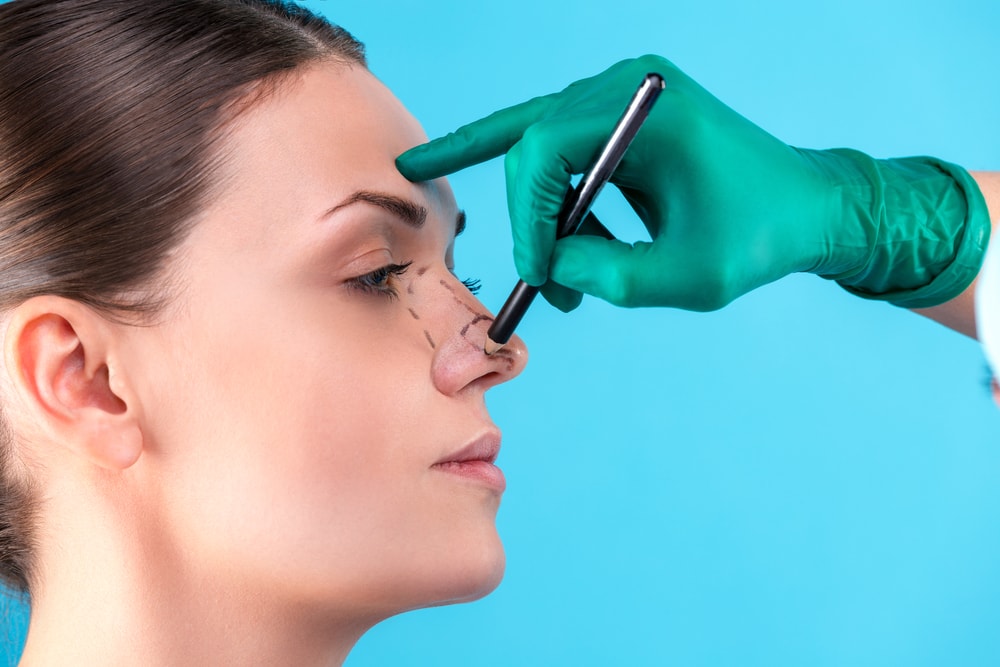
What is Nose Aesthetics (Rhinoplasty)? To Whom Can It Be Done?
Nose aesthetics, or rhinoplasty, is the name given to surgical operations performed to change the shape of the nose.
While rhinoplasty is performed to eliminate aesthetic dissatisfaction caused by the shape of the nose, in some cases, it is performed to eliminate airway problems in addition to aesthetic problems.
How to Prepare for Nose Aesthetic Surgery?
Physician-patient consultation is very important before rhinoplasty surgeries. The patient's expectations should be listened to thoroughly and it should be clearly analyzed whether it is suitable for the patient's anatomy. Patients with surreal expectations cannot be happy after surgery. For this reason, it is more appropriate not to be operated on such patients. Simulation studies made while deciding on surgery do not fully reflect the reality. As a result, a 100% predictable surgical result cannot be promised since it is a human being operated on.
After the decision for surgery is made, the patient should clearly know about the history of smoking and blood thinners that smoking is a parameter that negatively affects the results in rhinoplasty. For female patients, it should be kept in mind that surgeries during their menstrual period may increase swelling and bruising.
What Happens After Nose Aesthetics?
Rhinoplasty operations are performed under general anesthesia and the patient stays in the hospital for 1 day. Postoperative analgesic and antibiotic treatments are given. On the 3rd day, it is usually taken if intranasal silicone tampons are placed. On the 7th postoperative day, the splints on the nose are removed. Although patients see swollen and upturned noses in the early period, the shape of the nose becomes clearer as the edema recedes. In a situation that our patients should know clearly, they should not forget that the nose will take its final shape after 1 year.
In patients with thick skin, the swelling at the tip of the nose descends later than in patients with thin skin, and the shaping takes place later. Sometimes, in patients with very thick skin, the desired aesthetic results may not be achieved due to skin-related problems.Ağrı ve Şişlikler;
Ameliyat sonrası ağrı ve şişlikler beklenen bir durumdur. Erken dönemde birkaç gün ağrıların olması ve analjezik ilaçların kullanılması gereklidir. Ödem ve şişlikler ise özelikle 2-3. gün maksimum düzeye çıkmakta sonrasında zamanla azalmaktadır. Erken dönemde 1-1.5 ay içerisinde ödemlerde ciddi bir gerileme beklenir. Hastaların deri tipleri de uzun dönemli sonuçları etkilemektedir. Bu nedenle ameliyat öncesi görüşmeler sonuçlar ve memnuniyet açısından oldukça önemlidir.
Drug Use Process;
Antibiotics and analgesics are recommended in the postoperative period. In addition, antihistamine drugs can be added to reduce actions such as itching and sneezing in the early period. After the tampon and splint process, intranasal cleaning is explained to accelerate the healing of the intranasal mucosa.
Nutrition Process;
In the early postoperative period, salty and very hot food items that will increase blood pressure and increase bleeding should be avoided. In addition, a protein-based diet that will accelerate wound healing will be beneficial.
Control Process;
Burun estetiği sürecinde erken dönemde burun içi tamponlar genelde 3 veya 5. gün alınırken dış ateller ise 7 veya 10. gün alınmaktadır. Sonrasında ki süreçte aylık görüşmeler yapılarak 1. yıl sonuçlarına kadar kontrol altında olmalıdır.
Rhinoplasty Results
Rhinoplasty is an operation that looks easy from the outside but is quite complicated. The nose is a structure in the middle of the face that should be 3-dimensional and compatible with the face. The statements of even the most experienced surgeons about rhinoplasty are always clear. There is a risk of revision in every rhinoplasty.
Although the changes made during rhinoplasty are very small, these changes can make a big difference in the appearance and functioning of the nose. Since these changes are small, the margin of error is also high. It should be noted that after the surgery, the nose, like the rest of the body, changes throughout life. However, most of the swelling will usually disappear within a year. For this reason, it is recommended to wait at least one year even when a second operation is required.




